Preparations are well underway in Southampton by the student team looking to compete in HYDROcontest 2016. This competition brings together engineers and naval architects from all over Europe and beyond to face technical and management challenges.
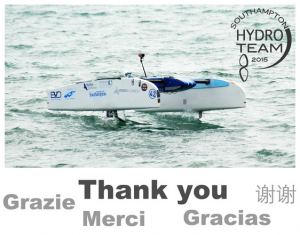
The University of Southampton team took part for the first time last summer. One of the company partners ABB was looking for a student to take up an industrial challenge of optimising the hydrodynamics of an electrical pod (thrust unit) for a six month internship at Hydros Innovation in Lausanne.
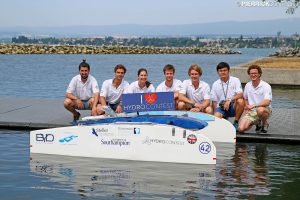
One of our MS students, Nicolas Verkant member of the 2015 Southampton Hydro Team applied as he was looking for a complex and interesting project to begin my career with. It was great news that he was selected and took up the challenge starting in mid February. Nicolas reports, ‘ I spent a few days discovering the goals, constraints, software and geometries. I ran a few simulations in order to find the correct setups before starting the optimisation process. The project really is interesting as a R&D study and also because it is a concrete case that may improve maritime transportation efficiency. The great quality work of the 2015 Southampton Hydro Team has been determinant for my application for this project. Therefore I really encourage people to take part in such a great adventure as this will develop knowledge and skills in very diverse fields, and it may even bring career opportunities. Good luck!’
Ariadna Pons Forn, MSc Yacht & Small Craft 15/16 and Marion James, PhD research student in the Fluid Structure Interactions group, went to the RINA headquarters in London on the 24th of February 2016 to attend the Maritime Project Management conference. They thank ABS and BMT for supporting them with sponsored student places.
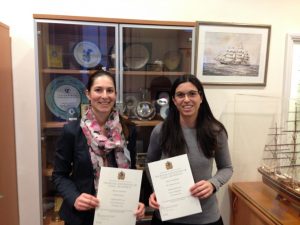
Several speakers discussed the challenges related to the management of concept design projects. In addition, the increased complexity of working in a multi-cultural ship building project was raised. Ariadna and Marion learnt key points to ensure good communication in the multi-cultural and multi-discipline project that is the Southampton Hydro Team.
www.SouthamptonHydroTeam.co.uk
Monthly Archives: March 2016
Science of Ships
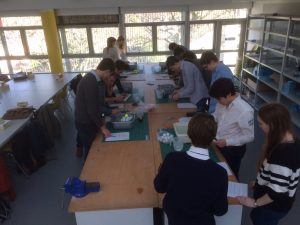
Ship science are participating in this year’s University Science and Engineering week activities on Saturday 12th March on our Boldrewood Innovation Campus. All are welcome – see University website for more information.

This is a great opportunity to meet staff and students and learn about some of the technical challenges involved in designing ships and offshore structures. A series of hands-on activities and demonstrations of the wave crawler ‘Fleur’ in the towing tank will be available for all ages to explore.
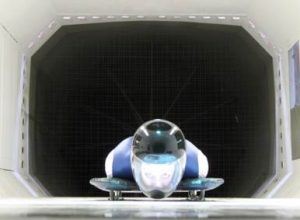
Prof Turnock will be giving a talk ‘Headfirst to success’ in the LR Auditorium at 11:25 and 14:45. In this he will explore some of the science and engineering behind performance in the wintersport of skeleton and also the links into Ship Design.
Whipping and Springing of Ships
Prof Nigel White will be giving the FSI seminar on Thursday 10th march, 12;00-13:00 in B176L room 1125. All are welcome.
Typically, Lloyd’s Rules for the design and construction of ships develop on a largely evolutionary process, however there are often very rapid advances in ship size or design which mean that the evolution process is questionable. The rules and design procedures are also updated on the basis of improved design technology. There has been a huge growth in the size of container ships, in 2000 the biggest ships were 8000 TEU with a length of 300m and beam of 43m, today the ultra large container ships (ULCS) 21,000 TEU have a length of 400m and beam of 60m. This growth is testing the existing evolutionary process, however current computer power means that we can develop procedures that allow us to assess the very complex effects of whipping and springing on the structure of these ULCS.
Containerships are unique in that they have very large deck openings, long hull forms, large bow flare and operate at fairly high operational speeds (roughly 18 knots or over). Each of these pose challenges on their own, but when combined the effect is potentially even more severe. The large deck openings mean that the torsional rigidity of the vessel is low and very high strength and thick steel is required for the deck and hatch coamings, the bow flare and high speed mean that the impact loads due to waves are high (whipping), the long length means that the natural vibration frequency of the hull girder is low and close to the encounter wave period due to the high speed (springing). LR has been working on the assessment of these issues over recent years and has taken the work developed by the universities back in the early 90s (including Southampton) into practical procedures that can be consistently applied.
The presentation gives an oversight into some of the issues related to the assessment of whipping and springing for ULCS. The need for such procedures was highlighted by the recent container ship total losses where whipping was a contributory factor.
Biography
Nigel is a Senior Principal Hydrodynamicist at Lloyds Register and works in the Structural Analysis and Hydrodynamics research group. He has also been recently elected as a Visiting Professor at the University of Southampton in the Ship Science department. Nigel has been with LR for 23 years and is the lead engineer for the development of Lloyds Register’s procedures in areas related to hydrodynamic expertise including ship motions, hydroelasticity (whipping/springing responses), impact loads, sloshing loads, dynamic load application, fluid structure interactions, etc. for all ship types. He has also been involved in many of the IACS working groups involving loads on ships.
